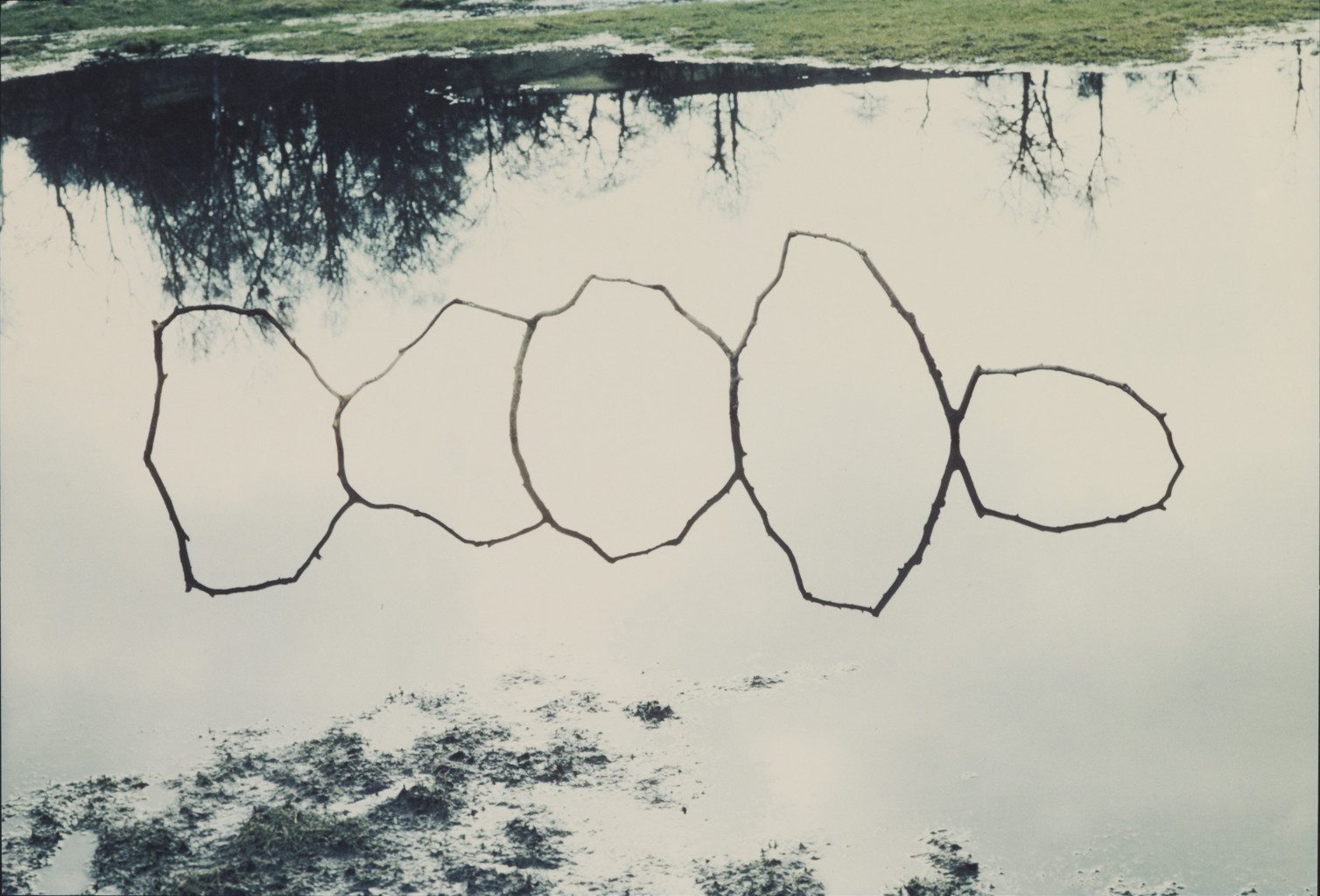Uncommon Ground: unearthed treasures
Uncommon Ground is a exhibition currently at the Mead Gallery, which showcases various mediums of British Land Art between 1966 to 1979 from the Arts Council Collection, Southbank Centre.
Land Art was a movement of the late 1960s, where artists from both Britain and America broke out of the studio and adopted a new stylistic approach, using ‘natural matter to forge new forms of art.’ Uncommon Ground deals with the reciprocal way humans affect and are affected by the natural environment they inhabit, whether the consequences are negative or positive. The relationship between man and nature is manipulated with the notion of the artist investigating, altering, and recording various aspects of nature.
The exhibition boasts an array of different forms of Land Art such as photography, sculpture and film. The exhibition asks us to evaluate our position in regards to our environment, instead depicting our normal interactions with nature as explorations of creativity and the boundaries which we live in.
John Hilliard’s ‘Across the Park’ (1972) features one image of a man walking through the park is repeated and paired with a set of photos depicting random acts, altering the everyday activity of a walk in the park. Another work also keeping to this scope of manmade natural spaces is David Lamelas’s photographic triad, ‘Signalling of Three Objects’ (1968), which explores how the public utilises parks. His objects seem randomly selected but we can also identify the evolution between them. The triad starts with a simple tree signifying nature, goes on to the deckchair – an object being used in natural conditions – and lastly it pictures a man sitting in the deckchair: the beneficiary of the collaboration of both man and nature. As an artistic creation, Lamelas work proves to be a success, instigating essential discussion through an unassuming platform.
Sculptural installations such as Anthony Gormley’s ‘Flat Tree’ (1978) feature as centre pieces in the exhibition space and provide the public with a more concrete experience of Land Art. In Gormley’s piece, the symbolism of man’s ability to deconstruct and reconstruct organic forms is shown through the arrangement of a thinly sliced tree, as it adopts the form of a spiral pattern.
Acclaimed land artist, Andy Goldsworthy, portrays the transition between seasons by contrasting a white snowball and a soil covered snowball (1979). Like Gormley, he revises the original properties of his environment and changes the organic appearance of natural matter, addressing man’s involvement with nature as an artist and a sculptor.Anthony McCall’s film ‘Landscape for Fire’ (1972) pairs ritualistic fires with the natural conditions of a heath. By using a surreal, interactive medium it shows the way nature can be used to project an artistic vision of meditative mystery. The sound of a resonating horn against the wind, in McCall’s sequence and pattern of man-made fire constructions, evokes a cathartic quality. The healing properties of nature are also addressed in David Nash’s construction ‘Fletched over ash dome – 23 Trees’ (1978) as pencil and chalk sketches envisage a ‘meditative chamber’.
A great deal of preliminary, investigative work is exhibited, with various sketches and notes by unknown artists. Susan Hiller pays homage to the unknown environmentalists who, in their photographic records of crashing waves, displays a genuine passion for the physical properties of nature. The analytical element towards their outlook of nature, contrasts with John Hilliard’s approach to a lake overlooked by Basalt crags near Hadrian’s Wall. ‘Basaltic Intrusion’ (1977) features photographs from different focal points in order to deduce the properties of water. The ‘structural division of landscape’ is evident through the labelling of ‘over’, ’under’ and ‘through’ as the perspective changes in each photo, therefore challenging our conception of water as something basic and simplistically natural. Barry Flanagan also highlights the importance of the otherwise mundane, in his close-up microscopic portrayals of grass. He forces us to question our existence in accordance with nature, as our ordinary perspective is distorted. Grass is no longer minute and taken for granted, but is rather captured and magnified, highlighting its utmost importance in our daily lives.
The exhibition sustains an appreciative stance towards nature, showing humans to consistently benefit from its therapeutic, practical and aesthetic qualities. Nature bears the possibility of bringing people together, as shown in Joan Hills, ‘Seeds for a Random Garden’ where a sense of community was established through the haphazard collection of random seeds by a random selection of people.
The positive qualities of nature in the exhibition urges us to protect our environment whatever the expense, and assess the way that we affect it in everyday life. As seen in Tony Cragg’s collection of plastic debris found along the River Rhine, the human impact on nature comes at a cost. Using these land artists as exemplars, we need to recognise the faults of man in order to adopt a more conscious and nurturing approach towards nature in the future.
Uncommon Ground: Land Art in Britain 1966-1979 is a FREE Arts Council Collection Exhibition from Southbank Centre, showing at the Mead Gallery, Warwick Arts Centre until Saturday 8 March 2014.

Comments (1)